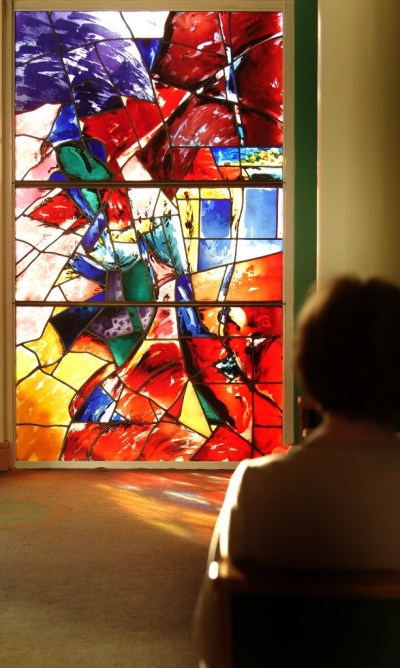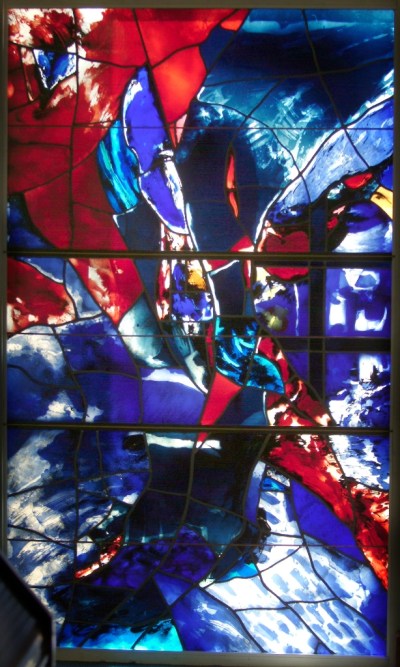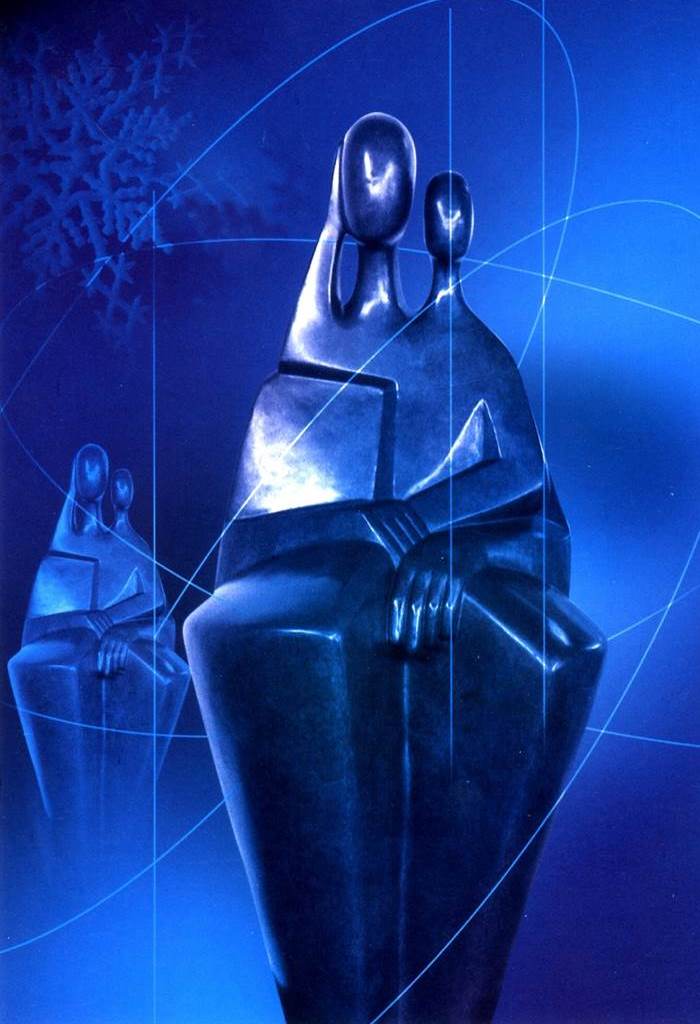The Chapel is located on the ground floor, and is open all day, for quiet reflection. An Induction Loop (PIC) system is in operation.
The Chapel
 The stained glass window on the left hand side was made possible by a gift from the Meath Foundation and the Meath Past Nurses. It represents HEALING: Hope, New Life and Resurrection.
The stained glass window on the left hand side was made possible by a gift from the Meath Foundation and the Meath Past Nurses. It represents HEALING: Hope, New Life and Resurrection.
 The window on the right hand side was made possible by a gift from the Board of the Hospital. It represents STRUGGLE: Suffering and Pain.
The window on the right hand side was made possible by a gift from the Board of the Hospital. It represents STRUGGLE: Suffering and Pain.
Both windows were designed and executed by James Scanlon of Cork.
The designing and furnishing of this chapel was inspired by the belief that in a place of healing and wholeness such as a hospital, the place of Christian worship should be suitable for use by all those who call on the name of the God and Father of Our Lord Jesus Christ.
We were commissioned together from many traditions of Christ’s people to give Glory to God, who as the Father of Our Lord Jesus Christ, surrounds us with love and calls us to healing and wholeness. The Chapel expresses this for us through the senses of sight, sound, scent, touch and taste.
The Chapel incorporates most if not all of the central features and symbols of the historic Christian Church.
Baptist, Church of Ireland, Methodist, Presbyterian and Roman Catholic understandings guided our thinking. The Architects of the Hospital, Robinson, Keefe and Devane, translated our conceptions into designs. It is our profound prayer that all who seek solace, comfort and refreshment in this place can share our joy in its creation.

The THEOTOKOS, which means God Bearer, was made possible by a gift from the Central Council of the Federated Dublin Voluntary Hospitals. It was designed and executed by Anna Duncan of Dublin.
The word ‘Theotokos’ literally means ‘the one who gives birth to God’. The title was officially given to Mary at the Council of Ephesus in 431AD. This Council was called to establish, as orthodox, the belief that Jesus was truly God incarnate, i.e. fully God and fully man. This concept was being vigorously challenged at the time. The title ‘Theotokos’ could rightly be given to Mary because according to the Scriptures He who was conceived of her by the Holy Spirit was called the Son of God. According to St. Cyril of Alexandria ‘to confess our faith in orthodox fashion… it is enough to confess that the Holy Virgin is Theotokos.’
St. John Damascene wrote ‘This name – Theotokos – contains the whole mystery of the incarnation.’ Much later Martin Luther could write ‘Without doubt Mary is the mother of God…and in this word is contained every honour which can be given to her.’ To say that Mary was the Birth-Giver of God is to confess a stunning mystery. It witnesses to a moment when the Creator of all things awoke to the softness of human touch, the sweetness of a human smile and the sound of a gentle voice. It means that God lifted his face to the morning dawn, smelled the spring blossoms and lived among the poor, the homeless and the hungry. It means that God has shared all of life, its joys and tears, light and darkness, happiness and pain. By an extraordinary exchange, the Divine was born of the stardust He created, became a son of the human race and made us in turn daughters and sons of God. The Theotokos in the hospital chapel is a reminder of God’s partnership with us in suffering as in health.